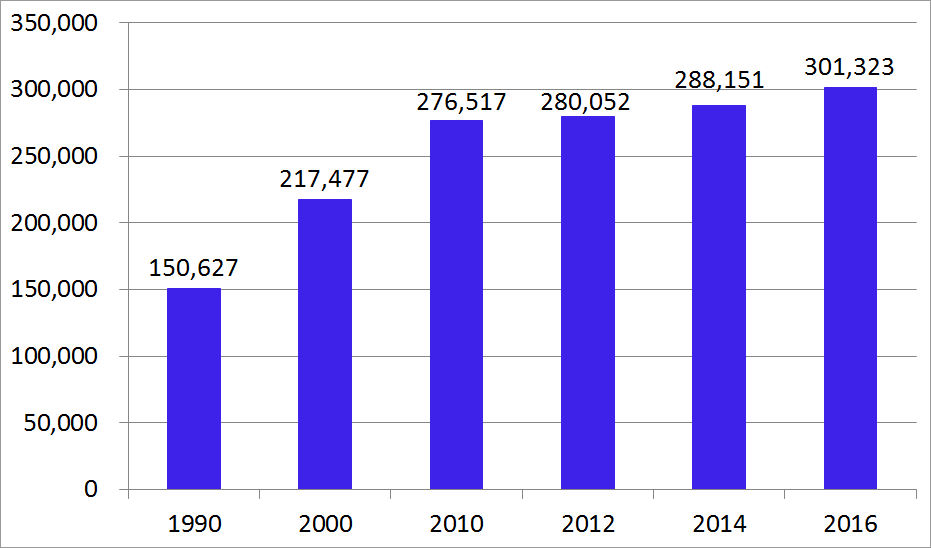Column Finance and the Social Security System 2018.06.01
【Aging, safety net and fiscal crisis in Japan】No.121: Pharmacists Oversupply in 2028
The Ministry of Health, Labor and Welfare surveys the number of pharmacists every two years. As shown in Figure 1, it doubled from 150,627 in 1990 to 301,323 in 2016. As a result, the number of pharmacists per 100,000 people increased from 123 to 237. This exponential growth can be attributed to the establishment of a department of pharmacy at the university level. The number of universities with pharmacy departments increased from 46 in 2002 to 73 in 2017. The number of entrance students was 10,662 as of April 2017. In the pharmacist national examination held in February 2018, the number of examinees was 13,579 of which 9,584 cleared the examination. In other words, nearly 10,000 new pharmacists are produced every year.
Pharmacies provide employment to these new pharmacists. As shown in Table 1, the percentage of pharmacists working at pharmacies increased from 52.7% in 2010 to 57.1% in 2016. However, as Column No.107 explains that the demand and supply of physicians would equilibrate in 2028 and then become excessive, the Ministry of Health, Labor and Welfare estimates pharmacists are also likely to become oversupplied in 10 years.
Figure 1: Number of pharmacists

Source: Ministry of Health, Labor and Welfare
Table 1: Number of pharmacists by workplace and occupation

Source: Ministry of Health, Labor and Welfare
